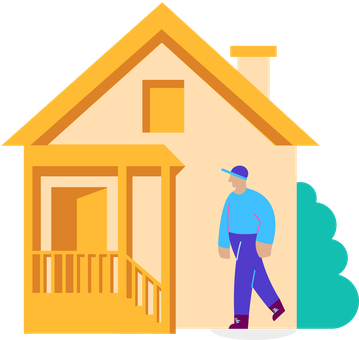Today Homeless Link publishes our 14th Annual Review of Support for Single Homeless People in England, an independent yearly assessment of the demographics, needs, and availability of services for single people accessing homelessness services in England. It is the only available resource of its kind in England’s homelessness sector and draws on four key data sources:
- Representative telephone and online surveys of 335 accommodation providers
- Representative telephone and online surveys of 59 day centres
- Homeless England database figures on projects and bed space availability
- Existing data on homelessness trends, including national statutory homelessness and rough sleeping figures
Our 2021 review found that the number and capacity of homelessness services has declined steeply since 2010, limiting the support options available to single people experiencing homelessness despite an increase in people experiencing rough sleeping over the same period.
Households – particularly single households – experiencing and at risk of homelessness have surpassed pre-pandemic levels, increasing by 6.9% from the last full pre-pandemic year (2018 to 2019) to 270,710. This includes 194,670 single households, up 1% from the previous year and 30% from 2018-2019. The latest national rough sleeping snapshot estimated that 2,440 people were sleeping rough on a single night, down 9% from last year but up 38% from 2010.
Despite an increasing number of people experiencing homelessness, service availability across the country has declined steeply since 2010. The number of accommodation providers for single people experiencing homelessness has gone down every year since we first began collecting this data in 2010, with 39% fewer accommodation providers now than there were 13 years ago. The number of day centres has dropped by 7% to 173, while the number of bed spaces is down 26% to 32,184.
Despite a reduction in projects, providers continue to offer a wide range of services to meet the needs of a hugely diverse population, while facing a range of barriers to external support services. Mental health services were the hardest to access, with 90% of services stating their clients encountered barriers – primarily waiting lists.
Further increasing the pressure on services, a lack of move-on options is leaving people trapped in homelessness accommodation longer than they need to be, with 43% of providers stating that over 50% of their residents were waiting over six months to move on. A lack of social housing – the most commonly reported move on outcome – was also cited as the main barrier to moving clients on. At the same time, funding has been relatively stagnant, with an overwhelming majority of respondents reporting funding having not changed from 2018-19 or having decreased.
While service capacity has declined and services struggle with accessing external services and a lack of move on options, the fallout from the COVID-19 pandemic appears to be pushing more people into homelessness, a trend which is likely to be worsened by the current cost-of-living crisis. Compared to the previous year, accommodation providers were most likely to report increases in their need to support: people experiencing homelessness for the first time (43%); people currently in low paid jobs, including zero-hour contracts (31%); and people who recently lost their job (30%).
These trends present a worrying picture, with stagnant funding across fewer providers who are facing a range of challenges accessing appropriate move on accommodation and external services. Out analysis demonstrates the vital importance in Government taking further action to prevent services from closing their doors, including providing sufficient and sustainable funding for services. More needs to be done to prevent an increasing number of people from experiencing homelessness through greater investment in prevention and a commitment to the Renters’ Reform Bill.

